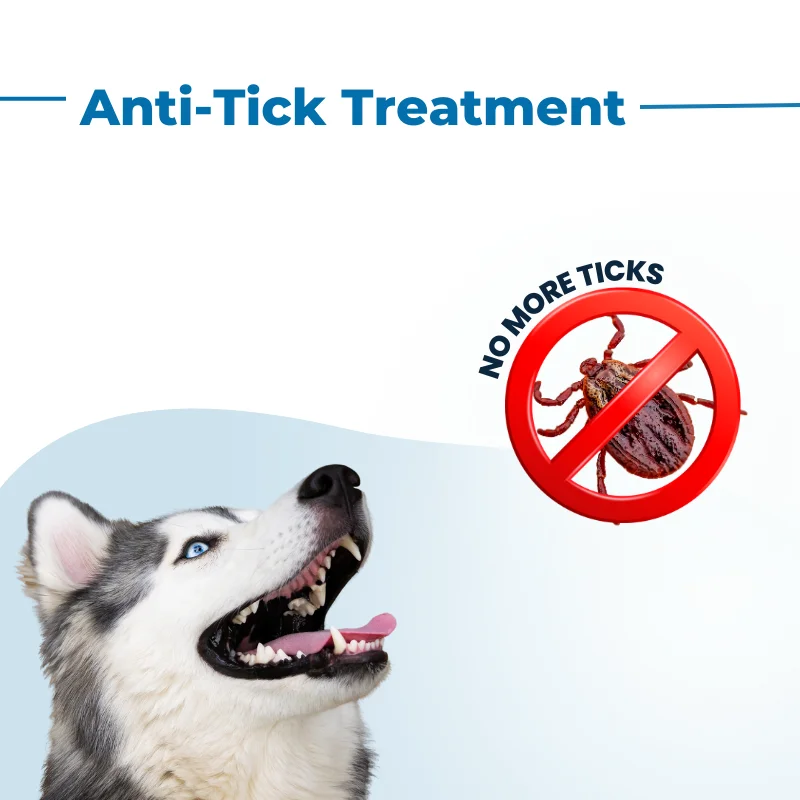Ticks can be a challenging issue for pet owners, especially in warm or wooded areas. From understanding how ticks affect your pet to learning effective tick treatment solutions, this guide covers all the essentials for keeping your pet safe and healthy.
What Are Ticks?
Ticks are tiny, blood-sucking parasites that attach to animals and people, feeding on their blood and potentially transmitting diseases. Recognizing ticks and knowing how to prevent their bites is key to effective tick treatment for your pets.
How Do Ticks Affect Pets?
Ticks cause discomfort and can spread diseases, including Lyme disease and ehrlichiosis, which pose serious health risks. Symptoms may include fever, lethargy, and swollen joints, and untreated tick bites can even lead to more severe complications.
Signs That Your Pet Needs Tick Treatment
Knowing when your pet may need tick treatment helps in early intervention and better outcomes.
Behavioral Changes
Pets might scratch or bite the area where a tick is attached. Excessive licking or grooming is another sign to watch for.
Skin Symptoms
Redness, inflammation, or a lump at the bite site are common signs of tick attachment. Inspecting your pet regularly is important, especially if they roam outdoors.
Tick Treatment Options
There are various ways to treat and prevent ticks. Here are some of the most reliable options:
1. Topical Tick Treatment
Topical treatments, often applied monthly, kill and repel ticks. These treatments are effective but require regular application for lasting protection.
2. Oral Tick Treatment
Oral medications are another great option. Given monthly or quarterly, these treatments work systemically and can kill ticks quickly.
3. Tick Collars
Tick collars are a long-lasting treatment option, typically effective for several months. They work by releasing active ingredients that repel ticks around the neck area. However, they may not provide full body protection.
4. Shampoos and Sprays
Anti-tick shampoos and sprays are suitable for immediate tick removal but are not as long-lasting as other treatments. Regular use is needed, especially if your pet has frequent exposure to tick-prone environments.
5. Natural Tick Treatments
For those who prefer natural tick treatment methods, options include essential oils like cedarwood or lavender. These are less aggressive but should be used with caution as some oils can irritate a pet’s skin.
Safe Methods for Removing Ticks at Home
Removing ticks safely and effectively helps reduce infection risks. Here’s a step-by-step guide to removing ticks from your pet:
- Gather Supplies: Get a pair of gloves, tweezers, and a disinfectant.
- Hold the Tick Firmly: Using tweezers, grab the tick close to your pet’s skin.
- Pull Slowly and Steadily: Gently pull the tick out without twisting.
- Clean the Area: Disinfect the area after removing the tick.
Preventative Tick Treatment and Care
Preventing ticks from latching onto your pet can save you from extensive tick treatment efforts. Here are preventive strategies:
1. Maintain a Tidy Yard
Keeping your yard neat by trimming bushes and grass can reduce tick habitats.
2. Use Preventive Treatments Year-Round
Regular use of topical or oral tick preventatives is essential, especially in areas prone to ticks. Follow your veterinarian’s advice on the best tick treatment plan.

Tick-Borne Diseases and Risks
Ticks can transmit several diseases that affect both pets and humans. Understanding these can help in early diagnosis and prompt treatment.
Common Tick-Borne Diseases
- Lyme Disease: Causes lethargy, joint swelling, and fever.
- Anaplasmosis: Results in symptoms like vomiting and diarrhea.
- Ehrlichiosis: Leads to fever, weight loss, and weakness.
Best Practices for Tick Treatment
When choosing a tick treatment, consult your veterinarian for advice. Regularly monitor your pet’s response to the treatment and make adjustments as needed.
Consistency is Key
Using tick treatments as directed ensures ongoing protection. Missing doses can make your pet susceptible to ticks, especially during peak tick seasons.
Keep an Eye on Side Effects
Some pets may react to certain tick treatments. Watch for signs like skin irritation or behavioral changes, and consult your vet if issues persist.
Final Thoughts
Managing ticks with proactive tick treatment and prevention ensures that your pet stays safe and healthy year-round. A well-thought-out tick treatment plan, paired with regular checks, can minimize the risks associated with ticks and ensure a happy life for your pet.


